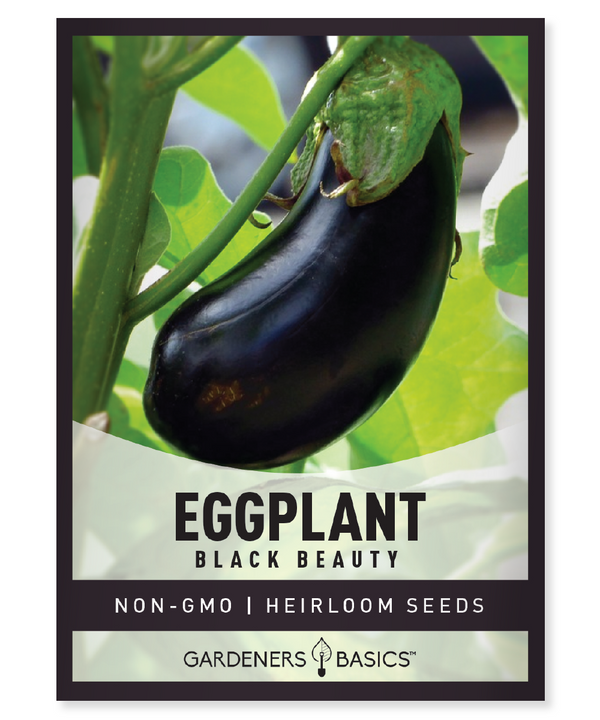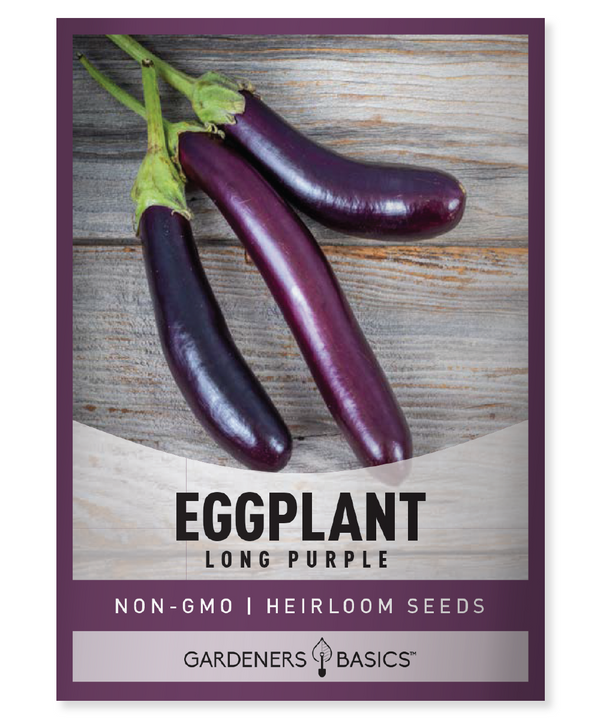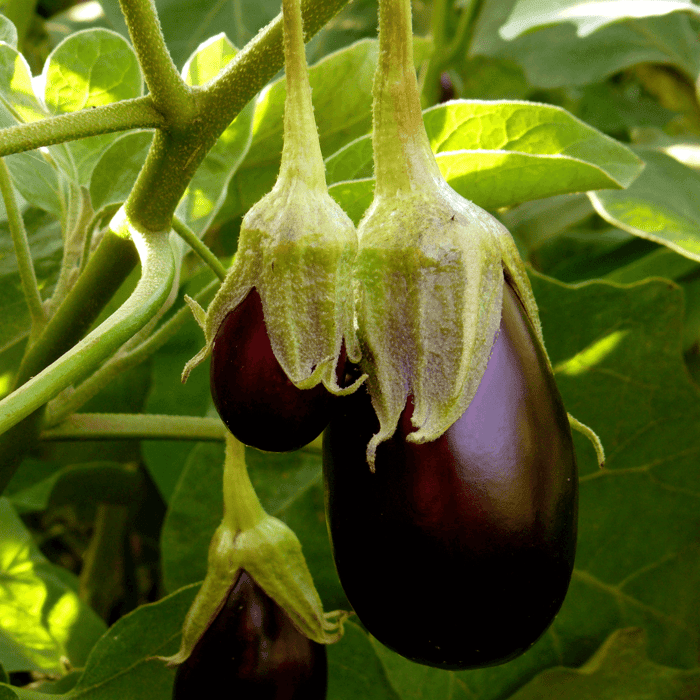Eggplants are a popular and versatile vegetable belonging to the nightshade family. Growing these delicious and nutritious vegetables at home can be a rewarding experience. As a female gardener passionate about homegrown veggies, I'm excited to share this step-by-step guide on planting eggplant from seeds. We'll explore different eggplant varieties, how to start them indoors, how to grow eggplant from seeds, and when to transplant them outdoors for a successful growing season. So, let's get started!
Table of Contents
- Introduction to Eggplants
- Choosing the Right Eggplant Variety
- Essential Plant Characteristics
- Starting Eggplant Seeds Indoors
- Preparing the Outdoor Garden
- Transplanting Eggplant Seedlings
- Caring for Your Eggplants Throughout the Growing Season
- Harvesting Eggplant
Introduction to Eggplants
Eggplants (Solanum melongena) are warm-season vegetables that thrive in temperatures between 70°F and 90°F. They are known for their unique taste and texture, which make them a staple in many cuisines worldwide. The key to growing healthy eggplants is to start them indoors several weeks before the last frost date and transplant them outdoors when the weather is consistently warm.
Choosing the Right Eggplant Variety
There are numerous eggplant varieties to choose from, each with its unique characteristics. Some common types include:
- Black Beauty eggplants: The Black Beauty is a classic, heirloom variety that has been popular for many years. It produces large, oval-shaped fruits with a deep purple, almost black color. The skin is glossy, and the flesh is tender and flavorful. Black Beauty eggplants can grow to be 4 to 6 inches in diameter and weigh up to 3 pounds, although they are typically harvested when smaller for the best taste and texture. This variety is well-suited for traditional eggplant dishes and takes about 70 to 80 days to mature from transplant.
- Long Purple eggplants: The Long Purple eggplant seed is another heirloom variety known for its elongated, cylindrical shape and vibrant purple color. The fruits can grow up to 8 to 10 inches long and have thinner skin compared to the Black Beauty variety. The Long Purple eggplant has a mild, slightly sweet flavor and a creamy texture. This variety is excellent for grilling, roasting, or using in dishes like eggplant Parmesan. The Long Purple eggplant takes approximately 75 to 85 days to mature from transplant.
Black Beauty Eggplant Seeds

$2.49
Black Beauty Eggplant Seeds - Heirloom, Non-GMO, Non-Hybrid, Open-Pollinated | Perfect for Home Gardeners and Farmers Grow delicious and beautiful Black Beauty Eggplants with our premium-quality heirloom seeds! These non-GMO, non-hybrid, and open-pollinated eggplant seeds are perfect for home gardeners… read more
When selecting an eggplant variety, consider factors such as your local climate, garden space, and personal taste preferences.
Essential Plant Characteristics
Before planting your eggplant seeds, familiarize yourself with the following plant characteristics:
- History of the Seed: Eggplants originated in India and have been cultivated for thousands of years. They were later introduced to Europe and the Americas.
- Days till maturity: Eggplants typically take 100 to 150 days from seed to harvest, depending on the variety.
- Planting depth: Sow eggplant seeds about ¼ inch deep in the soil.
- Plant spacing: Space the plants 18 to 24 inches apart, with rows 30 to 36 inches apart.
- Days to germination: Eggplant seeds germinate within 7 to 14 days.
- Start indoors or direct sown: Eggplants should be started indoors, as they require a long growing season and warm temperatures.
- Full sun or partial shade: Eggplants grow best in full sun, receiving at least 6 hours of sunlight daily.
- When to harvest: Harvest eggplants when they have reached their mature size, and the skin is glossy and firm.
- Plant height: Eggplants grow to be about 2 to 4 feet tall.
- Plant width: Eggplant plants can spread 2 to 3 feet wide.
Starting Eggplant Seeds Indoors
To give your eggplants a head start, begin planting them indoors 6 to 8 weeks before the last frost date. Follow these steps for successful seed germination:
- Choose a seed starting mix: A high-quality seed starting mix is essential for good root growth. Look for a mix that is lightweight, well-draining, and can retain moisture.
- Fill seed trays or pots: Fill your chosen seed-starting containers with the mix, leaving about ¼ inch of space from the top.
- Plant the seeds: Sow eggplant seeds about ¼ inch deep, gently pressing them into the soil.
- Moisten the soil: Water the soil gently, ensuring that it is evenly moist but not waterlogged.
- Provide warmth: Place the containers in a warm area or use a heat mat to maintain a consistent temperature of 70°F to 90°F. This range is optimal for eggplant seed germination.
- Cover the containers: Cover the containers with a plastic dome or plastic wrap to help retain moisture and create a humid environment.
- Monitor the seeds: Check the soil regularly and keep it consistently moist. Expect the eggplant seeds to germinate in 7 to 14 days.
- Provide light: Once the seeds have germinated, remove the cover and place the seedlings in a sunny location or under grow lights. Ensure they receive at least 16 hours of light daily.
Vegetable Seed Vault Kit | 35 Variety Pack

$29.95
$49.95
Ultimate Survival Seed Vault: 16,000+ Non-GMO Heirloom Vegetable Seeds for Emergency Preparedness Introducing the Seed Vault Kit, your all-in-one solution for emergency preparedness and sustainable gardening. This premium seed kit contains over 16,000 non-GMO, Heirloom, Non-Hybrid, and Open Pollinated seeds,… read more
Preparing the Outdoor Garden
Before transplanting eggplant seedlings outdoors, prepare the garden bed by following these steps:
- Choose a location: Select a spot in your garden that receives full sun and has well-draining soil.
- Prepare the soil: Work the soil to a depth of 12 inches, removing any weeds, rocks, or debris. Eggplants are heavy feeders, so amend the soil with compost or aged manure to provide necessary nutrients.
- Create raised beds: If your soil is heavy clay or poorly draining, consider constructing raised beds to promote better root growth and drainage.
Transplanting Eggplant Seedlings
When the outdoor temperatures are consistently above 70°F and the seedlings have 2 to 4 true leaves, it's time to transplant them into your garden. Follow these steps:
- Harden off the seedlings: Gradually expose the seedlings to outdoor conditions for 7 to 10 days to help them acclimate.
- Dig planting holes: Create holes in the garden bed, spaced 18 to 24 inches apart, with rows 30 to 36 inches apart.
- Transplant the seedlings: Gently remove the seedlings from their containers and place them in the holes, ensuring the root ball is level with the soil surface. Fill in the holes and firm the soil around the seedlings.
- Water the seedlings: Water the newly transplanted seedlings thoroughly to help establish the roots.
Caring for Your Eggplants Throughout the Growing Season
Proper care is essential for a bountiful harvest. Follow these tips:
- Watering: Keep the soil consistently moist, providing about 1 inch of water per week. Use mulch to help retain moisture and prevent weeds.
- Fertilizing: Fertilize eggplants every 4 to 6 weeks with a balanced fertilizer or aged compost.
- Pest control: Use row covers to protect young seedlings from pests like flea beetles. Regularly inspect plants for signs of infestation and treat them accordingly.
- Staking: Provide support to the plants by using stakes or cages to prevent branches from breaking under the weight of the fruit.
Harvesting Eggplant
Harvesting eggplant at the right time is crucial for the best taste and texture. Follow these guidelines:
- Check for maturity: Look for glossy, firm skin and a mature size specific to the variety. A properly ripe eggplant should have a slight give when gently squeezed.
- Harvesting technique: Use a sharp knife or pruning shears to cut the eggplant from the stem, leaving about 1 inch of the stem attached to the fruit. Avoid pulling or twisting the fruit, as this can damage the plant.
- Frequency: Check your plants frequently and harvest the fruits as they mature. Regular harvesting encourages the plant to produce more fruit.
- Storage: Eggplants can be stored at room temperature for a few days but are best consumed shortly after harvesting for optimal flavor.
In conclusion, growing eggplant from seeds can be a rewarding experience that provides you with delicious, homegrown vegetables to enjoy. By following this comprehensive guide, you can successfully plant, care for, and harvest your eggplants for a bountiful harvest. Now, it's time to put your green thumb to work and start planting those eggplant seeds!
Long Purple Eggplant Seeds

$2.49
Long Purple Eggplant Seeds – Heirloom, Non-GMO, Non-Hybrid, Open-Pollinated | Planting, Growing, and Harvesting Guide Discover the beauty and flavor of Long Purple Eggplant with our premium heirloom seeds, meticulously selected for gardeners who value quality and productivity. Perfect for… read more
 Frequently Asked Questions - How to Plant Eggplant From Seeds
Frequently Asked Questions - How to Plant Eggplant From Seeds
Q: Can eggplants be grown in containers?
A: Yes, eggplants can be successfully grown in containers. Choose a pot with a minimum size of 5 gallons and ensure it has drainage holes. Use a high-quality potting mix and follow the same planting and care guidelines as for garden beds.
Q: How many eggplants can I expect per plant?
A: The number of eggplants produced per plant varies depending on the variety and growing conditions. On average, you can expect 4 to 6 fruits per plant, but some varieties may produce more.
Q: Do eggplants need to be pollinated?
A: Eggplants are self-pollinating, which means they do not require cross-pollination by insects or other plants. However, the presence of pollinators such as bees can help improve fruit set and production.
Q: Can I save seeds from my eggplants for planting next year?
A: Yes, you can save seeds from open-pollinated or heirloom eggplant varieties for planting the following year. However, seeds saved from hybrid varieties may not produce plants with the same characteristics as the parent plant.
Q: Why are my eggplants turning brown and mushy?
A: Brown, mushy eggplants are often a sign of overripeness or disease. Harvest eggplants when they have reached their mature size and have a glossy, firm skin. Monitor plants for signs of disease and treat them accordingly to maintain healthy plants.
Q: What are some companion plants for eggplants?
A: Good companion plants for eggplants include beans, peas, marigolds, and basil. These plants can help deter pests and improve overall plant health. Avoid planting eggplants near potatoes, as they may compete for nutrients and attract similar pests.
Q: How do I know if my eggplants are receiving enough sunlight?
A: Eggplants require full sun, which means at least 6 hours of direct sunlight per day. If your plants are not receiving enough sunlight, they may exhibit slow growth, poor fruit production, or legginess (elongated stems with sparse foliage). If necessary, move container-grown eggplants to a sunnier location or prune nearby plants to allow more light to reach the eggplants.
Q: Should I prune my eggplant plants?
A: Pruning eggplants is not necessary but can be beneficial in some cases. You can remove some lower leaves to improve air circulation and prevent diseases. Additionally, you can pinch off the growing tips when the plant reaches around 2 feet tall to encourage bushier growth and more fruit production.
Q: Are eggplants susceptible to any common diseases?
A: Eggplants can be affected by various diseases, such as Verticillium wilt, Fusarium wilt, and bacterial wilt. To prevent these diseases, ensure good air circulation, avoid overhead watering, and practice crop rotation. If a plant becomes infected, remove and destroy it to prevent the disease from spreading to healthy plants.
Q: When should I start fertilizing my eggplants?
A: Begin fertilizing eggplants once they have been transplanted into the garden and have established a strong root system. Continue to fertilize every 4 to 6 weeks throughout the growing season with a balanced fertilizer or aged compost.
Q: How can I protect my eggplants from pests?
A: To protect your eggplants from pests like flea beetles, use row covers on young seedlings. Inspect your plants regularly for signs of infestation, such as chewed leaves or the presence of insects, and treat accordingly with organic or chemical controls, as needed. Encourage beneficial insects like ladybugs and lacewings by planting flowers and herbs that attract them to your garden.







